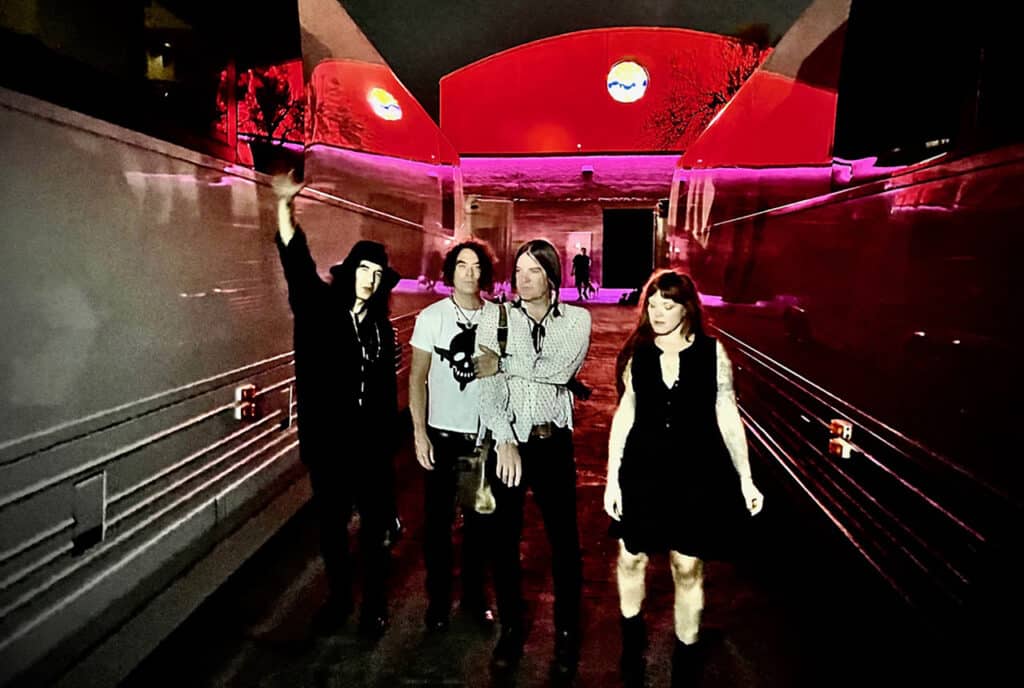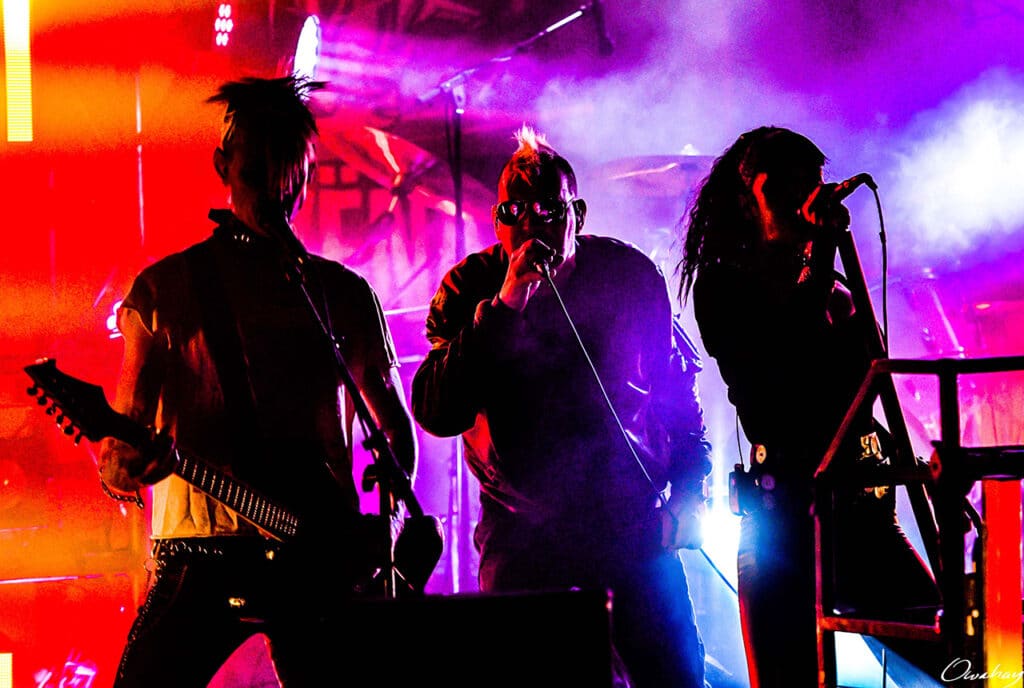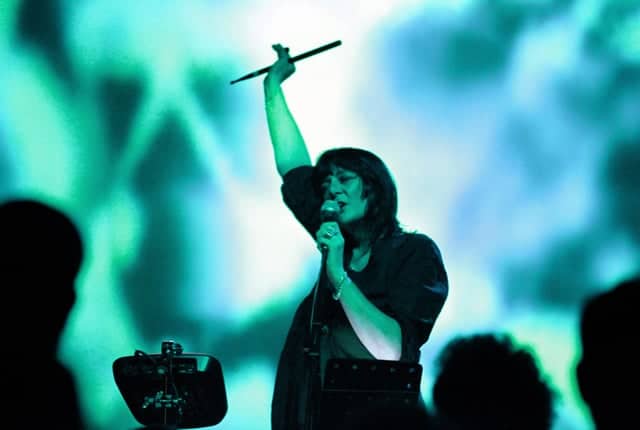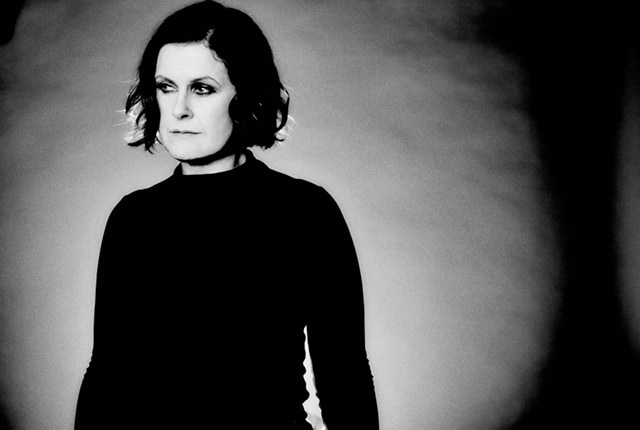Guitarist Henry Frayne started up Lanterna around 30 years ago, and his latest release, Hidden Drives, represents the fruition of music ideas spanning the decades. Having compiled old cassette tapes onto CD, Frayne revisited the unfinished material and shaped it into the ten completed tracks that became Hidden Drives. Featuring more electric guitar and synthesizer than past Lanterna releases, Hidden Drives brings an atmospheric edge to tightly crafted and highly rhythmic instrumental compositions.
Frayne released three albums in the 90s as part of The Moon Seven Times, and band members Lynn Canfield (vocals) and Brendan Gamble (drums) appeared on early Lanterna recordings. He has also been part of such bands as Lodestone Destiny, The Syndicate, ¡Ack-Ack!, and Area.
In a phone interview, Frayne discussed the making of Hidden Drives.
Hidden Drives incorporates musical ideas of yours that go back many years. Could you elaborate on how the album came together?
Henry Frayne: Lanterna was always drawing on songs from all sorts of stages. And back in 1991, I did actually use a song from one of my first bands called The Syndicate, re-recorded ten years later, which is now 40 years later. But for the current album, Hidden Drives, I was definitely reaching back to some songs that have been in my notebooks and on cassette tapes for a long time. And by the seventh album, I guess it was about time to sort of grab some of those songs that were like “Ah, I’ve wanted to finish that for a long time”, and just do the work and sit down and try and puzzle it out. And so finally, this record does seem to have a good number of songs that have been in the mix for a long time, so to speak.
Had these song ideas persisted in your mind over the years, or was it more a case of deciding it was time to focus on an album and then going through your archive?
Henry Frayne: Gosh, I suppose just a little bit of both, but it was a rather organic project. Mechanically speaking for this record, I went through old cassette tapes and made a CDR of maybe 20 or 30 pieces. That’s something I have wanted to do for a long time. Once it gets to a point where I want to finish one, it really kind of floats through the top. For some reason, looking back at the album as a whole, I’m glad that these ten were the ones that kind of all fit together. So that’s why I say it was very organic. It wasn’t quite “This one’s going to work, and this one’s going to work”. They were all coming together at the same time. And finally, these ten were the ones that made it.
Are there any particular songs that you think really changed or evolved as you completed them?
Henry Frayne: Certainly the song ‘Nice,’ which is actually pronounced like the French town. It was just an electric sort of guitar melody riff, and as we recorded it without drums, the acoustic tracks sort of took over. Somehow there was a way to play the acoustic part kind of strummed and get those notes of the electric guitar into it. So, it became much more of a kind of a folk [song] or something more than the original, which was specifically just a guitar riff. And also ‘Chagrin Boulevard.’ That became a lot bigger, with a couple of acoustic guitars, and the really sparkly electric guitars were sort of a suggestion of Mike Brosco, the producer I’ve been working with for 20 years or so on the last four Lanterna records. So there again, working with him, he recommended sort of something over the top, and that’s what we did for that song.
What made you decide to include a series of remixes at the end?
Henry Frayne: Those are the ones that sort of had the drum tracks on them, and we just thought it would perhaps highlight some of the instruments in the background. Working with Mike Brosco for 20 years on all of the Lanterna albums, we meticulously record these backing tracks with an acoustic guitar, a Nashville tuned guitar, or an electric guitar. You kind of miss them once the whole mix is put together. And so for this album, I was just like, ‘Let’s do a mix that really highlights that.’ I asked Mike Brosco if he would like to drop out the drum tracks and make them different. One review said that it makes the album pretty long if you listen to all of it. But in this day and age, I don’t know if anyone has listened to a whole album recently.
I know that the vinyl version was mastered specifically for that format. Did preparing a vinyl version have any other impact, such as perhaps sequencing the tracks for two sides?
Henry Frayne: The album in my mind, those are the ten songs. With the 2015 record, we started to think about doing vinyl again. And luckily, it turned out to be 40 minutes of music, which we were able to put on two sides of the record. Whereas all those records we were doing back in the ’90s or the early 2000s; those were 70 something minutes. And it’s kind of hard to figure out how you’re going to program something that doesn’t really fit on a bunch of sides, three sides, or four sides.
Has your creative process or approach to Lanterna changed over the years?
Henry Frayne: After the first record, which was co-written with Brendan Gamble and Lynn Canfield on a number of songs, Lanterna became me just working on songs on my own and then recording them, getting a drummer friend to play. So in my mind, it’s just been a continuation of learning how to record or how to write music. The first band I was in, in the ’80s, was ¡Ack-Ack!. There I learned how to record and write with a group of people, and that continued into the band Area and then The Moon Seven Times. That was very much writing songs as a group. Although I continued writing songs on my own, I’ve always sort of had that thought in mind of the band writing.
I would say that I haven’t gotten much better with the frustrating parts. When I’m working, when an idea comes up, then I start to work on it. I keep pushing and sort of start to have a tendency to sit back and say, ‘well, that’s great. I’ll have to finish that up sometime, that’s a good start.’ And then, unfortunately, years can go by until I get back to it and really make those rather simple but hard decisions of ‘how many times do you do this and how many times do this?’ And ‘is there going to be the third part of the song or a fourth part?’ Those are the sorts of things that I haven’t gotten much better at. The parts sound so nice, but it needs another part. And until you can dream that up, the song is stuck in that limbo phase as some of these songs were. So it is very satisfying when finally you get down to it and say, ‘okay, this is how I’m going to finish the song’. And in general, listening back, there were pretty good choices made, and they tend to sound very good.
Do you perform this material live?
Henry Frayne: Yes. At odd times I put a band together and play. Starting in 1996, in Champaign here, some friends were like, ‘Hey, you should really put a band together and play a show at the Blind Pig.’ Over time, I’ve put bands together. Eric Gebow, who plays on three of the last four Lanterna records, has played live with me pretty much for the last 20 years. We went to Greece once, and we’ve been to the East Coast and played in the Midwest. Eric Gebow and his drumming has been very, very important over the last albums, because I know I could call on him, except when he was in Japan for five years. For Backyards, Mike Brosco and I had Louie Simon play drums on that album.
The overall sound and mood is a big part of the listening experience. Are you thinking about things like effects and production as you’re doing the initial composition? Or is it fleshed out after the initial musical ideas are recorded?
Henry Frayne: It just sort of grows out of the parts. It’s a very painterly process of just adding and adding and listening and seeing if something is needed there. So it’s not an overall plan.
To order “Hidden Drives,” visit badmanrecordingco.com.
For more info on Lanterna, visit lanterna.tv.










